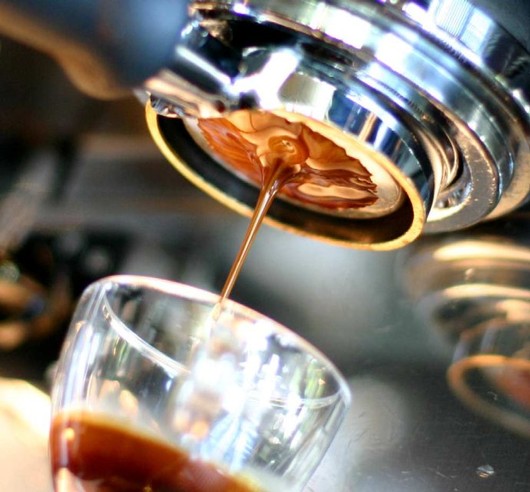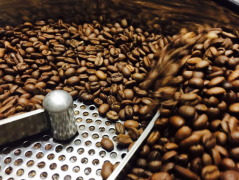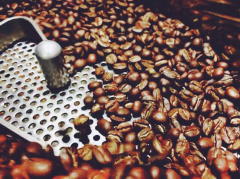Development history of coffee machine A brief history of coffee machine development in Italy

At the beginning of the 20th century, an "impatient engineer" living near Napoli, Italy, was impatient with dripping coffee for too long, so he came up with a way to make coffee in a high-temperature, high-pressure way to shorten the time, so he invented the world's unique Italian coffee for quick cooking, and Espresso became popular. The quick Italian conditioning method invented by the impatient engineer can not only save the time of brewing coffee, but also make the coffee with mellow flavor, so it is called Espresso by the Italians to commemorate the engineer's discovery. Espresso sounds like Italian art, but it simply means "under pressure" in Italian, which is the same as the English word for under pressure. After that, we saw the above passage in many books and in the essence of BBS, which is regarded as the origin of Italian coffee (Espresso). The "impatient engineer of the early 20th century" described in the above paragraph means probably Luigi Bezzera. I don't know if Bezzera is impatient, but he made a coffee machine under steam pressure in 1901, not only because he was "impatient with dripping coffee for too long", but more importantly, he knew that too slow brewing time would directly affect the quality of coffee ── because the brewing time was too long, so the coffee powder was not available.
It can be ground too fine, and rough grinding means that fewer aromatic components can be extracted than fine powder. Speed is only a superficial reason, and the pursuit of quality is the driving force for the development of Espresso! moreover, I cannot agree that Bezzera invented Espresso alone, although he was the first person to try to make a commercial coffee machine under the pressure of steam, and he was also the first person to shape the prototype of the Italian coffee machine (now the Group Head on the Italian coffee machine first appeared on the Bezzera coffee machine) And create the Espresso cultural characteristics that are made in the bar (bar) and put coffee directly into the guest cup. However, the coffee brewed by this kind of coffee machine still does not have the delicious taste of Espresso and is full of Crema. This is mainly because Bezzera's coffee machine uses the steam produced when the water boils, which forms pressure in an airtight boiler and pushes hot water into the coffee powder in the shower head. In order to make steam, the whole boiler must be heated to boiling, causing hot water near the boiling point to burn the coffee powder, lose the aromatic oil hidden in the coffee powder, and extract the doubly bitter coffee. The coffee brewed from Bezzera's machine cannot form Crema for two main reasons: 1. The hot water for brewing coffee is too hot, resulting in the loss of oil. two。 The steam boiler cannot provide enough pressure. Even so, exerting extra pressure to shorten the time it takes to brew coffee is still worth the effort. Just don't use steam, what should be used as a source of pressure? The further question is: how much pressure does it take to get the best extraction rate? a brief history of Italian coffee machines Ⅱ in 1903, Desiderio Pavoni obtained a design patent for Bezzera, and he began to make the coffee machine in 1905. After that, Teresio Arduino began to produce similar coffee machines, and other producers followed suit. In the 1920s, coffee shops in Italy could see signs of this kind of coffee machine. But the Italians are obviously not satisfied with the results of the steam pressure coffee machine. The pressure should be increased by steam, but increasing the heat may burn the coffee powder during cooking, lose the aromatic oil hidden in the coffee powder, and extract the doubly bitter coffee. Therefore, some people thought: is it possible to directly put pressure on hot water instead of boiling water and using steam as pressure? during the two world wars, people used the natural pressure of water from the faucet to increase the pressure of brewing coffee. The coffee machine uses electricity to quickly heat a small pot of water to the boiling temperature, each pot of water to make a cup of coffee, each pot connected to the faucet. As long as the operator gently press the pole on the small pot, the pressure of the faucet will push the hot water in the small pot to the coffee powder. According to the difference of water pressure in different regions, generally speaking, the pressure generated by this coffee machine is greater than the 1.5 atmospheric pressure produced by the steam pressure coffee machine. The height of this coffee machine is not too different from that of the steam pressure coffee machine, but the overall size is smaller. The appearance is more in line with the popular trend of the late 1920s and 1930s, replacing the arc of the steam pressure coffee machine with straight lines and geometric lines. Another way to generate more pressure than 1.5 atmospheres is to use compressed air. For example, a home coffee machine in Milanes collector Ambrogio Fumagalli uses an air pump to pressurize hot water for brewing coffee (during World War II). In 1938, Francesco IIIy made the llletta' Coffee Machine, a large commercial coffee machine based on the principle of compressed air. Before World War II, Signore Cremonesi added the Piston to the coffee machine to replace steam as a source of pressure: when the crossbar on the coffee machine was lifted, water was injected into the space occupied by the piston and pressed down, and the pressure on the piston injected water evenly into the coffee powder in the filter, meaning that hot water could brew the coffee before it boiled without scalding the coffee powder. At the same time, Achille Gaggia, the owner of a cafe in Milan, used a similar method to brew coffee. This method is gradually adopted by other coffee machine manufacturers, so this new coffee machine is also gradually replacing the steam pressure coffee machine. Today, the application of this principle can still be seen on household machines, the La Pavoni. Ⅲ, a brief history of the development of the Italian coffee machine, mentioned last week that before World War II, Signore Cremonesi added the piston (Piston) to the coffee machine to replace steam as a source of pressure. Although it avoids the disadvantage of using steam as a source of pressure, it is easy to burn the coffee powder, but because the pressure is transmitted through the piston to push the hot water, it not only requires a strong arm, but also the pressure is not easy to stabilize. World War II stopped Cremonesi and Gaggia from improving the coffee machine. When Cremonesi died during the war, he left the patent for the coffee maker to his widow, Rosetta Scorza. We don't know whether Rosetta Scorza told Gaggia about the design patent, or whether Gaggia's design came entirely from its own invention. In 1947, Gaggia improved the original piston principle, and the force of the piston was controlled by a spring. As long as the operator presses the rod, the spring will be compressed and hot water will be injected into the space between the piston and the coffee powder. When the spring on the piston expands, press the piston down, the hot water will flow to the coffee place, and the rod will return to its original position. In 1948, Gaggia applied this principle to complete his coffee machine, because he pushed hot water into a denser coffee powder and the pressure was greater and more stable than ever before, resulting in a layer of Krima on the coffee, which appeared for the first time in history. Since then, Klima has become the symbol of Italian coffee, and like Turkish coffee in the past, Klima is also the standard to judge whether coffee is good or bad. Gaggia's coffee machine also makes the brewing process more dramatic, with the arm operating the crossbar and the crossbar slowly returning to its original position, which has become a routine at many Espresso bars. The household La Pavoni still maintains the tradition of Signore Cremonesi and does not add a spring to the piston, but some coffee machines on the market that are very similar to La Pavoni, such as the Elektra (Family series), add springs to make the pressure stronger and more stable. The method of discrimination is very simple, as long as you gently press the crossbar to see if there is any reaction force of the spring. A brief history of Italian coffee machine Ⅴ in this nearly century of coffee machine evolution history, Italians found that due to the use of additional 8-9bar pressure to force water quickly through coffee powder, pressure-rich water and coffee powder to produce an average resistance, reducing the extraction time of each cup of coffee to 25 seconds, and making the coffee powder as soft as flour to improve the extraction rate. At the same time, it condenses the aroma and gum in the coffee, producing a layer of ochre red Krima on the coffee. Because of this layer of Krima, Espresso is displayed with a thick colloid, which is closely integrated with the rich milk foam, creating all kinds of Italian coffee, including cappuccino.
It is because of the coffee brewing method of Espresso, which not only speeds up the brewing speed, but also improves the coffee quality. On the one hand, it makes the coffee shop owner save time and cost, and increases the daily brewing volume by several times. On the other hand, it also attracts more coffee population. Now it has swept the coffee market all over the world and become the mainstream in the market. Although the Italians never occupied any colony that produced coffee, they used the superb technology of traditional craft to improve the method of brewing coffee and created excellent brewing technology and machines like Espresso, which easily occupied the vast majority of the coffee market in the world.
Sina Weibo: 90 coffee users
Important Notice :
前街咖啡 FrontStreet Coffee has moved to new addredd:
FrontStreet Coffee Address: 315,Donghua East Road,GuangZhou
Tel:020 38364473
- Prev

The History of Coffee Market in China the time point of coffee development history
The Oriental Enlightenment of Coffee this article comes from the Timeline 14:30 big players from mature markets, together with the growing new forces, are painting a unique ecological picture of this brown powder drink in China. [fan Jing / Wen] in the early winter of 1985, Chen Baoqing, who works in Kraft, walked quickly into a foreign hotel in Beijing in the cold wind. He is no longer a horse.
- Next

The history of coffee. How much do you know about the history of coffee?
When we enjoy coffee, most of the time we just think of it as a drink, a different, unique, refreshing drink, but seldom think about it: what's the big thing about a small coffee? Just because coffee is astonishingly famous, it is the second largest export product in the world after oil. Since it was recognized and first eaten by human beings, it has been used for the first time.
Related
- How did the Salvadoran coffee industry develop in Central America?
- What exactly does the golden cup extraction of coffee mean?
- The Origin of Coffee flower
- [2023 Starbucks World Earth Day] there are more meaningful things besides free Starbucks coffee!
- What kind of coffee is there in Spain? 9 Flavors of Spanish Coffee
- Aromatic African coffee| Kenya's coffee culture and historical production area
- Liberica Coffee Bean knowledge: the characteristics of Liberian Coffee beans of the three original species of Coffee beans
- The origin and formula of Spanish latte introduces the taste characteristics of Bombon coffee in Valencia, Spain.
- How to adjust the solution of over-extracted coffee
- What is the tasting period of coffee beans? What is the period of coffee and beans? How should coffee wake up and raise beans?

